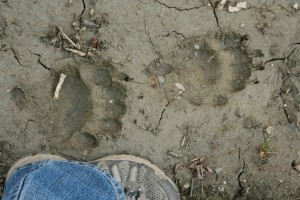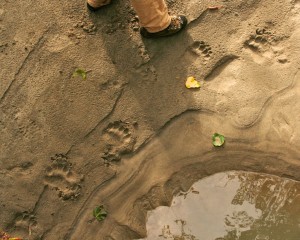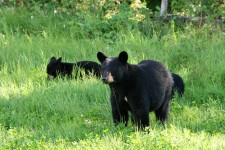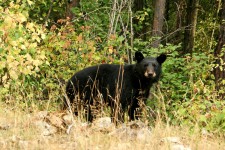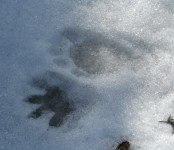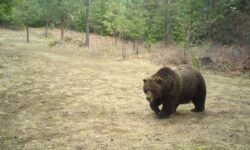Seeing grizzly bear tracks in the snow on the trail always heightens my awareness, especially relatively fresh tracks where the claw marks can still be seen. The scenarios of what could happen start rolling through my head as I begin to make more noise.
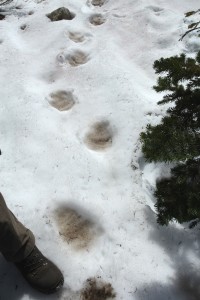
Grizzly bears can weigh 200 to 600 pounds, be 3.5 to 4 feet tall at the shoulders and six to seven feet tall when standing on their hind feet. Tracks can look huge when partially melted in the snow.
This spring I realized I needed to learn more about bear behavior to best avoid a conflict and review what to do if an encounter occurs.
Grizzly bears typically are active at night, dawn and dusk. However, if food is scarce or abundant they will be active day or night.
In the summer grizzly bears eat forbs, roots, tubers, insects, berries, moths, thistle, fireweed, ground squirrels and newly born elk and deer. Come fall, their diet switches to whitebark pine nuts, insect nests, starchy tubers and roots, and berries.
After grizzly bears emerge from their dens in the spring they eat young green vegetation, winter-killed animals, ants, grasses, sedges, clover, dandelion, cow parsnip and other plants.
Signs that grizzly bears are foraging in the area include stumps turned over, logs ripped open or rocks flipped over where the bear was looking for insects. Bears also cache large animals by covering them with dirt, branches and grass.
These signs are often found in the grizzly’s favorite habitat–forests with meadows and grasslands. These areas often are the same areas we seek out for hiking. Frequently grizzly bears follow the same routes we do–roads and trails–and that is why we often see their scat or tracks.
Bear scat is quite dark in color and contains partially digested vegetation, berries insects or hair. Grizzly bear scat is about two inches in diameter but that isn’t a reliable way to distinguish grizzly bears from black bears.
Tracks are a better way to distinguish grizzly bears from black bears. Bear tracks are identified by their large pad with five toes. To tell the difference between a grizzly bear and black bear track look at the toes on the front track. If you draw a straight line between the pad and the toes, all of the toes of a grizzly bear will be above the line while one of the black bear’s toes will be below the line.
If the tracks are fresh, help alert the bear to your presence by talking, singing or clapping. Bear bells are less effective and whistling is not recommended because it may sound like an animal (pika or ground squirrel) and attract the bear.
Grizzly bears are naturally shy and typically avoid humans. They most likely will smell people first because their nose is 1,000 times more developed than a person’s nose. They use their nose to remember where food sources are located (which is why some bears become problem bears at campgrounds).
However, bear encounters do happen whether on the trail or on the road. Knowing the difference between a grizzly bear and a black bear is crucial in knowing how to respond to an attack.
Color is not a good indicator as black bears can be brown and vice versa. Grizzly bears have a shoulder hump, short rounded ears and a dished-shaped face profile. Black bears have no shoulder hump, taller ears, and a straight face profile.
Seeing a bear in the wild can be a thrilling experience if at a distance. If the encounter is close range, being prepared is the best way to avoid an attack. Look in next week’s column for how to handle bear encounters and attacks.

